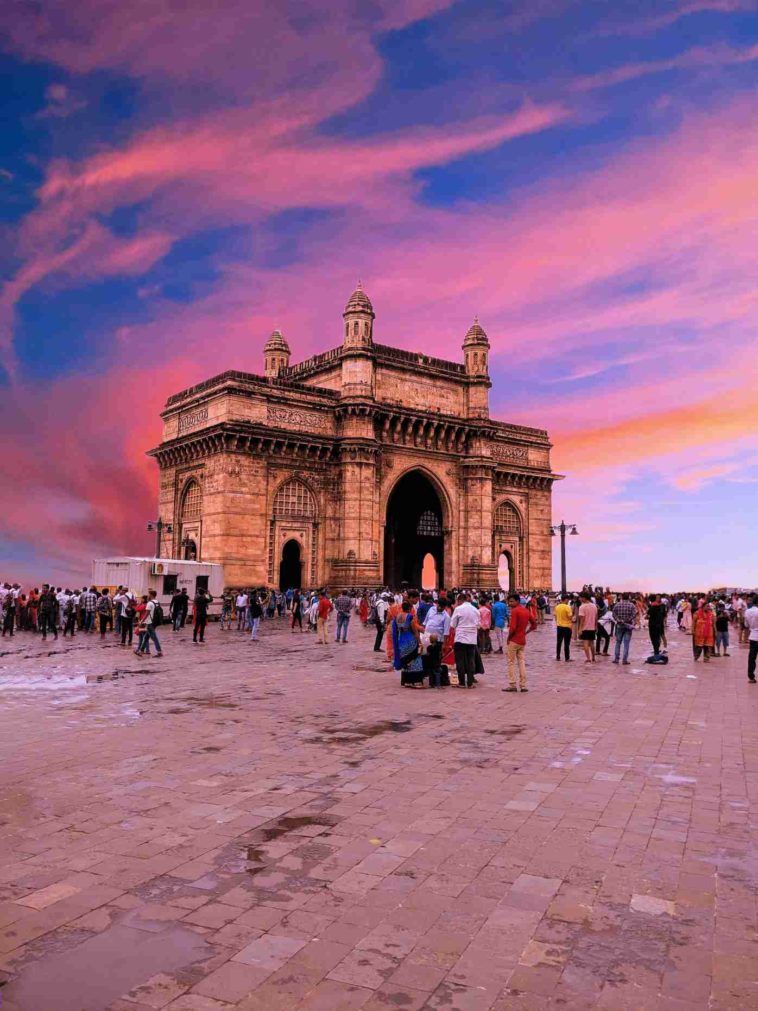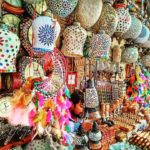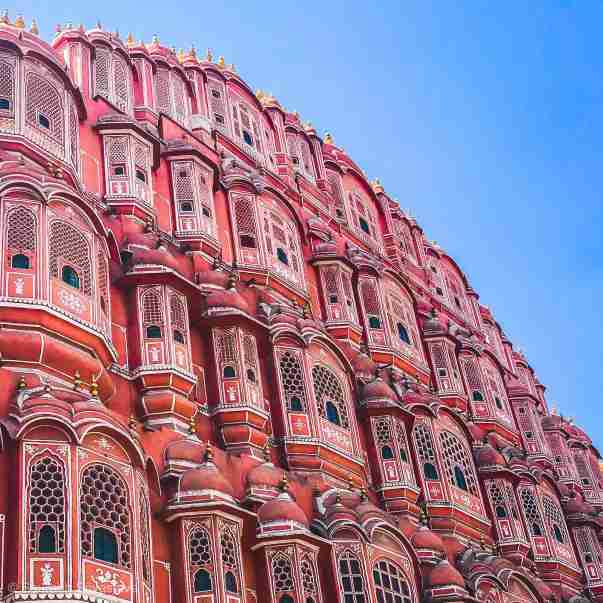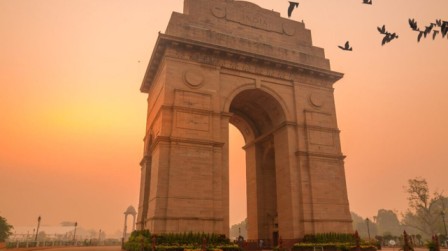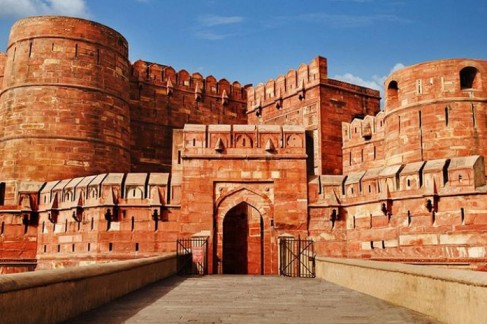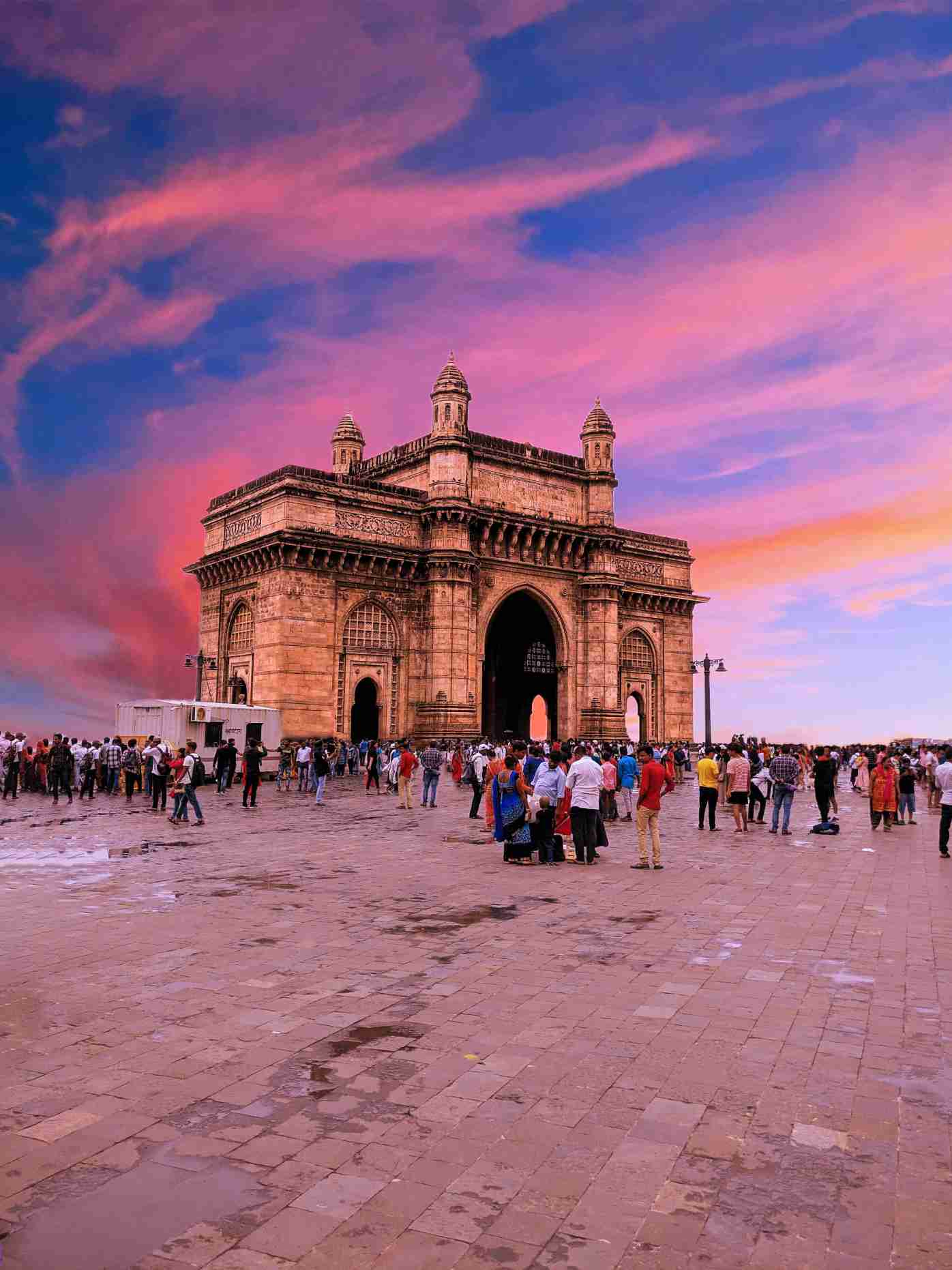Mumbai is the city of dreams where thousands of people come and struggle to fulfil their dreams. In such a fast paced city, there are few iconic monuments which build the bridge between the history and the present scenario.
Synonymous to Mumbai is the symbol of ‘conquest and colonisation’ – The Gateway of India.
Blast from the Past
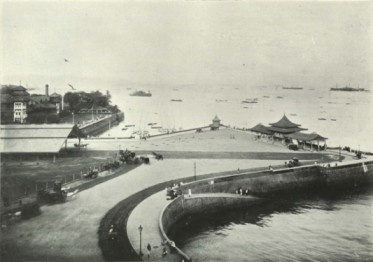
The Gateway was built with a purpose to basically commemorate the arrival of ‘George V’, who was then the Emperor of India and ‘Mary of Teck’ who was the Empress Consort in India, at Apollo Bunder, Bombay on 2nd December 1911.
Though they only get to see the cardboard model as the construction did not start till 1915, the foundation was laid in 1913 by the governor of Bombay ‘Sir George Sydenham Clarke’ with the final design of ‘George Wittet’ who was the architect of the Gateway, sanctioned in 1914.
The foundations were completed in 1920 whereas the construction was fully completed by 1924. The Gateway was then open for the public on 4th December, 1924.
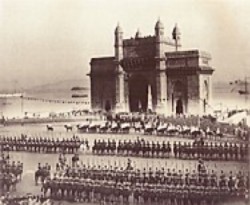
Following the India’s independence and end of the British Raj, the last British troops to leave India, passed through the gateway with a 21-gun salute as part of a ceremony on 28th February, 1948.

Location
The Gateway reflects the history which it has seen since the British Raj and post independence standing at an angle, opposite to the Taj Mahal Palace and Tower Hotel overlooking the strong waves of Arabian Sea which has witnessed many heroes and intruders.
Just opposite to the monument, stands the statue of Maratha Warrior – ‘Chhatrapati Shivaji Maharaj’ who fought mercilessly against Mughal Empire with all his guts in the 17th century. The statue has replaced the then bronze statue of King-Emperor George V.
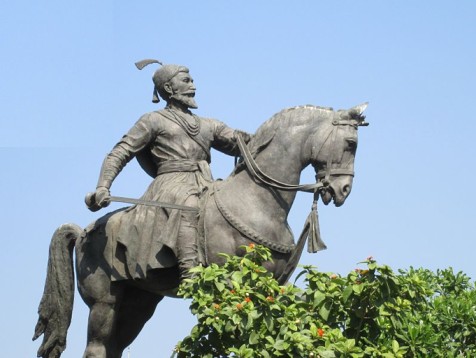
The statue of Chhatrapati Shivaji was unveiled on 26th January, 1961 on the occasion of Republic Day.
The other statue is of ‘Swami Vivekananda’, the great Indian philosopher and monk who is a key figure and the man behind bringing ‘Hinduism’ to the world major religion status in the late 19th century.
Design and Architecture of Gateway of India
The monument which is known as the symbol of ‘conquest and colonisation’ is built of yellow basalt and reinforced concrete.

The arch of the gateway is 26 metres in height and its central dome being 15 metres in diameter. The monument faces towards the Mumbai Harbour.
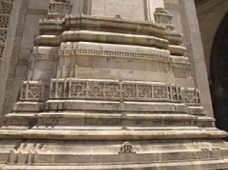
There are steps constructed behind the arch of the Gateway of India which leads to the Arabian Sea. On each side of the arch are the halls which have the capacity to hold 600 people.

It even features intricate ‘Jali’ work as the Scottish architect combined both the elements of ‘Roman triumphal arc’ and the architectural style of Gujarat in the 16th century. The monument also has combined elements from Islamic architectural style which makes the complete monument an Indo-Saracenic architectural style.
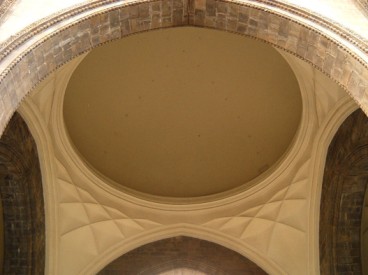
Jetties
There are mainly five jetties located around the monument.
The first one is strictly exclusive to ‘Bhabha Atomic Research Centre’.
The second and third one is used as commercial ferry operations.
The fourth one is currently not under any use and the fifth one is exclusive to the ‘Royal Bombay Yacht Club’.
Digital Preservation of Monument
In February 2019, ‘Seagate Technology and CyArk’ embarked on a mission to digitally record and preserve the gateway by digital scanning and archiving the monument.
The images and data that would be collected through this technology would be used to make real three dimensional models.
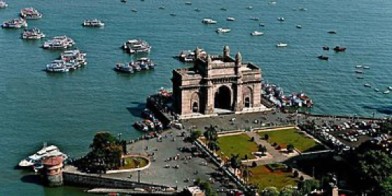
It even involves aerial surveys conducted with terrestrial laser scanning (LiDAR), drones and photogrammetric exercises.
Tourism and Development – Major Highlights
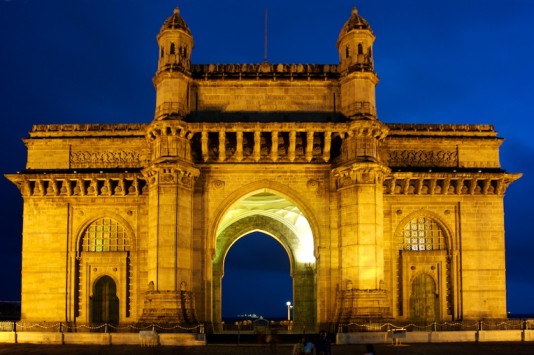
The Gateway is among the most visited tourist attractions in Mumbai. It is a protected monument under the aegis of Archaeological Survey of India. You can witness regular gatherings of locals, vendors, tourists and photographers from all over the country and even abroad.
In 2012, Maharashtra Tourism Development Corporation moved the ‘Elephanta Festival of Music and Dance’ from its original location – ‘Elephanta Caves’ due to the increased capacity offered by the Gateway of India.
The Gateway has interested companies such as the ‘Tata Group’, the ‘RPG Group’ and ‘JSW Group’ who have come forward and expressed their wish to contribute towards the maintenance of Gateway of India and enhance its facilities.
In August 2019, ‘Snapchat’ extended its Landmarker features to the Gateway of India by which users can superimpose augmented reality experiences on top of their pictures of the gateway.
What all can you do?
Witnessing such a mesmerizing monument which showcases the rich history and the times it has stood there where it has been the sole witness of changing times itself is a beautiful experience.
With the cool breeze of sea touching the face and the mind completely diverted towards the exact events happened in and around the gateway is actually a serene tourist experience.
Don’t forget to witness the monument both day and night time as both times it has its own charm.
Entry Fee: No entry fee
Timing: All days of the week; open for 24 hours
How to reach?– It is 2.5 kms far from Chhatrapati Shivaji Terminal and 2.4 kms from Churchgate Railway station.
You can take advantage of local trains as it is cheap but let me warn you, it is overcrowded every hour of the day.
Private taxis and autos are easily available and will help you to access the Gateway.
Read about more places to visit in South Mumbai HERE


